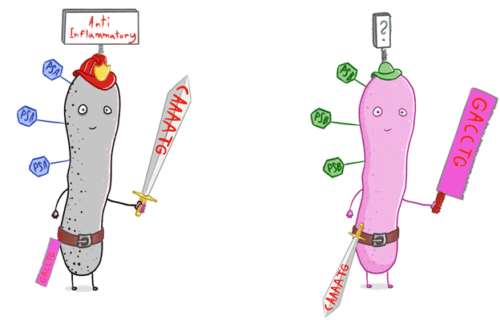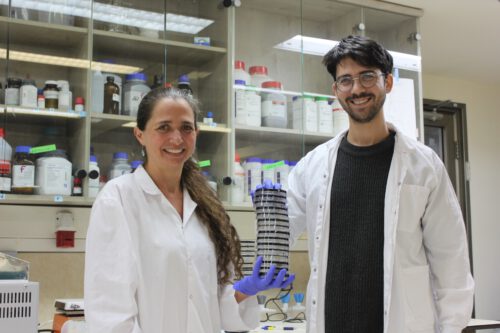Researchers at the Technion discovered how the intestinal bacteria deal with changes in their living environment - through reversible genetic variation

Dr. Naama Geva-Zatorski and doctoral student Nadav Ben-Asa from the Rapaport Faculty of Medicine together with colleagues from Harvard deciphered a mechanism of Reversible genetic variation which helps the intestinal bacteria cope with changes in their living environment. The findings were published in the journal Nucleic Acids Research The seer of light is published by Oxford.
Gut bacteria are an extremely significant population of organisms in the human microbiome. These bacteria have evolved over hundreds of millions of years in co-evolution with man and his ancestors, until today we cannot live without them; They are essential for the proper functioning of the immune system and the health of the entire body.
The intestinal bacteria are required to deal with thedynamism The vastness of the intestine, that is, with structural, mechanical and chemical changes that occur in it continuously. One of the mechanisms that help them in this is Rapid and reversible changes in their genomes, in response to external stimulation.
In the article in question, we will examine this mechanism in one of the common bacteria in the intestine,Bacteroides fragilis . This bacterium is capable to replace defined regions in its genetic sequence. The researchers focused on the role of this ability to influence the genetic expression of the bacteria.
The researchers examined the genetic expressions of those (alternative) changes and found Extensive changes in the bacterial genome. "Among other things, we found changes in the sugars surrounding the bacteria," says Dr. Geva-Zatorski. "These sugars constitute a kind of 'identity card' that helps the bacterium communicate with the environment. Thus they also help our body, and more specifically the immune system, to identify the type of bacteria and respond to it. Therefore, we hypothesize that the changes in the intestine change that ID and thus allow our cells to respond to the bacteria in different ways."

Reversible genetic changes
The researchers emphasize that these are genetic changes reversible which are based on substitutions of regions in the genome in a central system in the bacterium. Therefore, these substitutions have extensive effects on the genetic expression of the bacterium, including on various essential molecules.
The genetic analysis was conducted using SMRT - an innovative technology of Pacific Biosciences (PacBio) developed in the last decade. This technology makes it possible to map long sequences in DNA molecules and furthermore, to identify epigenetic modifications on the DNA molecules. In the studied system, the substitutions in the genome affected genetic modifications and the genetic expression of the entire bacterium. This system also has detection capabilities of hostile factors, such as bacteriophages, and this is what the follow-up research currently being carried out in the laboratory deals with.
The research was supported by the Technion President's Fund, the Alon Fellowship, ISF, the Applebaum Family Foundation, Gutwirt and Human Frontiers.
for the article inNucleic Acids Research
More of the topic in Hayadan:
